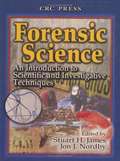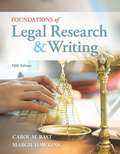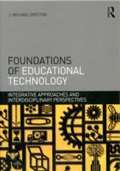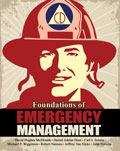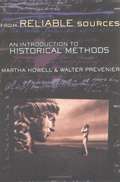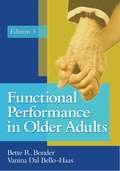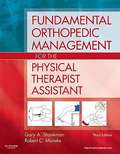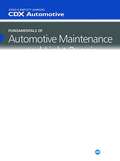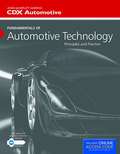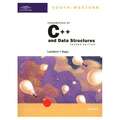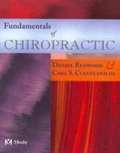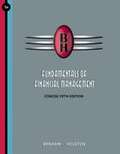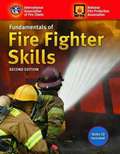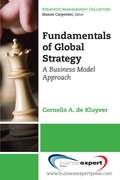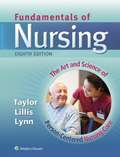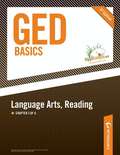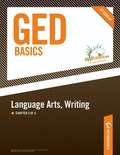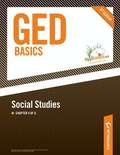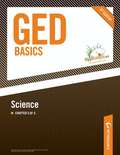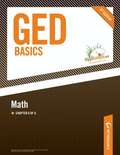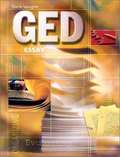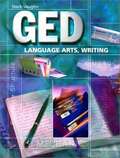- Table View
- List View
Forensic Science: An Introduction to Scientific and Investigative Techniques
by Stuart H. James Jon J. NordbyEncompassing classic criminalistics and the latest techniques, this introductory text presents forensic science with cases and techniques made accessible to nonscientists at the advanced high school and undergraduate level. The text covers forensic pathology and related specialties, evaluation of the crime scene, forensic science in the laboratory, forensic engineering, cybertechnology and forensic science, forensic application of the social sciences, and legal and ethical issues in forensic science. Learning features include quizzes, an extensive glossary, numerous color photos, and appendices on professional guidelines, safety precautions, and web sites. The authors are forensic consultants. Annotation copyrighted by Book News, Inc. , Portland, OR
Foundations Of Legal Research And Writing
by Carol M. Bast Margie HawkinsFOUNDATIONS OF LEGAL RESEARCH AND WRITING, Fifth Edition is the ideal resource for paralegals. The book's up-to-the-minute coverage tackles the ever-evolving areas of computer-assisted research and Cyber law, in addition to traditional legal research, analysis, and writing. Extensive research chapters address primary and secondary sources, citating, Lexis/Nexis, the Internet, and more, while writing sections center on drafting client opinion letters, pleadings, contracts, office memos, memoranda of law, and appellate briefs. Every chapter gives you practice writing opportunities, as well as traditional and computer-assisted research assignments to help develop your skills. Detailed case excerpts, samples, tips, and discussions further support the assignments, and illustrate the many perils of inadequate research and poor legal writing. Readers everywhere agree that FOUNDATIONS OF LEGAL RESEARCH AND WRITING, Fifth Edition delivers the concepts you need for success in the most demanding law firms and legal departments today.
Foundations of Educational Technology: Integrative Approaches and Interdisciplinary Perspectives
by J. Michael SpectorAn ideal textbook for masters, doctoral, or educational specialist certificate programs, Foundations of Educational Technologyoffers a fresh, project-centered approach to the subject, helping students build an extensive electronic portfolio as they navigate the text. The book addresses fundamental characteristics of educational technology that span various users, contexts and settings; includes a full range of engaging exercises for students that will contribute to their professional growth; and offers the following 4-step pedagogical features inspired by M. D. Merrill's First Principles of Instruction: TELL: Primary presentations and pointers to major sources of information and resources ASK: Activities that encourage students to critique applications and share their individual interpretations SHOW: Activities that demonstrate the application of key concepts and complex skills with appropriate opportunities for learner responses DO: Activities in which learners apply key concepts and complex skills while working on practice assignments and/or projects to be created for their electronic portfolios The first textbook to launch Routledge's new Integrative Approaches to Educational Technologyseries, this indispensible volume covers the core objectives addressed in foundations of educational technology courses.
Foundations of Emergency Management
by David Mcelreath Julie C. Speck Robert Nations Carl J. Jensen [et al.]Covers the following topics: Foundations of Emergency Management History of Emergency Management in the United States Principle Hazards Facing the United States Power and Policy of Stakeholders and First Responders Roles in Emergency Management Strategy Roles in Emergency Management: Volunteer Organizations and NGOs Role of the Emergency Manager and Developing an Effective Emergency Management Organization Preparing for the Inevitable The Emergency Management Process: Risk Perception and Analysis, Prevention, and Hazard Mitigation The Emergency Management Process: Disaster Recovery Professionalization of Emergency Management International Emergency Management Future of Emergency Management
From Reliable Sources: An Introduction to Historical Methods
by Martha C. Howell Walter PrevenierFrom Reliable Sources is a lively introduction to historical methodology, an overview of the techniques historians must master in order to reconstruct the past. Its focus on the basics of source criticism, rather than on how to find references or on the process of writing, makes it an invaluable guide for all students of history and for anyone who must extract meaning from written and unwritten sources. Martha Howell and Walter Prevenier explore the methods employed by historians to establish the reliability of materials; how they choose, authenticate, decode, compare, and, finally, interpret those sources. Illustrating their discussion with examples from the distant past as well as more contemporary events, they pay particular attention to recent information media, such as television, film, and videotape. The authors do not subscribe to the positivist belief that the historian can attain objective and total knowledge of the past. Instead, they argue that each generation of historians develops its own perspective, and that our understanding of the past is constantly reshaped by the historian and the world he or she inhabits. A substantially revised and updated edition of Prevenier's Uit goede bron, originally published in Belgium and now in its seventh edition, From Reliable Sources also provides a survey of western historiography and an extensive research bibliography.
Front Office Management for the Veterinary Team
by Heather PrendergastThe only book of its kind, Front Office Management for the Veterinary Team focuses on the day-to-day duties of the veterinary team. It offers a complete guide to scheduling appointments, billing and accounting, communicating effectively and compassionately with clients, managing medical records, budgeting, marketing your practice, managing inventory, using outside diagnostic laboratory services, and much more. Written by Heather Prendergast, RVT, CVPM, this manual simplifies essential tasks with step-by-step instructions! Exercises on the Evolve website offer additional practice with front office tasks. Interactive working forms give you experience completing sample checks, deposit slips, patient history forms, and incident reports. The latest information on electronic banking and tax forms ensures that you adhere to the most current financial guidelines. What Would You Do/Not Do boxes provide scenarios to expose you to real-life situations that occur in veterinary practice and guide you through to an appropriate resolution. Review questions test your understanding of concepts presented in each chapter. Practice Point boxes highlight practical information to remember while on the job. Veterinary Practice and the Law boxes provide essential information about laws that you must know in order to run an ethical practice and to protect the practice. Key terms and learning objectives guide you through study of the most important content.
Functional Performance in Older Adults (Third Edition)
by Bette R. Bonder Vanina Dal Bello-Haas Marilyn B. Wagner Bette Bonder Vanina Bello-Haas"The contributors represent diverse disciplines, however their messages create a coherent, integrated work of universal interest and application. I highly recommend the use of this text for allied health students who are studying geriatric rehabilitation and for clinicians who wish to renew their knowledge. "--Carole Knight, MEd, OTR/L, Occupational Therapy in Health Care Journal, Volume 16, Number 2/3 February 2003, review of the 2nd Edition. The ideal resource for rehabilitation professionals who are working with or preparing to work with older adults! It describes the normal aging process, illustrates how health and social factors can impede an aging person's abilities, and demonstrates how to develop mechanisms for maximizing the well-being of older adults.
Fundamental Orthopedic Management for the Physical Therapist Assistant (Third Edition)
by Gary A. Shankman Robert C. ManskeDesigned to meet the unique needs of physical therapist assistants, Fundamental Orthopedic Management for the Physical Therapist Assistant, 3rd Edition focuses on critical thinking and helps you apply fundamental orthopedic principles in physical therapy interventions. Clear explanations cover basic concepts such as the PTA's role in physical assessment of flexibility, strength, endurance, and balance, along with the specifics of tissue healing; medications; gait and joint mobilization; and an introduction to biomechanics. It also describes the application of therapeutic interventions for many orthopedic conditions by region and affliction. Edited by two experienced clinicians, Gary A. Shankman and Robert C. Manske, and written by contributors who are experts in their respective fields, this is your one-stop source for PTA practice in orthopedics. Clear explanations of difficult concepts are provided by experienced, practicing clinicians who address the specific needs of the PTA. Comprehensive coverage provides a "one-stop" source for all things orthopedic, from core concepts related to orthopedics to information about the PTA's role in physical assessment and interventions, in-depth reviews of types of tissue healing, biomechanics, and pharmacology. A focus on critical thinking and application helps to prepare you for the treatment room and for the clinical practicum portions of the curriculum. Key terms and learning objectives begin each chapter, useful as "checkpoints" to which you can refer to ensure content comprehension and study effectively for examinations. Over 500 illustrations reinforce concepts and procedures, supplemented by summary tables and boxes. End-of-chapter review questions prepare you for the types of critical thinking you will be required to do in practice. Unique! End-of-chapter glossaries define key terms. Appendices provide a quick reference for information such as laboratory values, common medications, and associated movements. A six-part structure organizes the book's material: Part I: Basic Concepts of Orthopedic Management begins with the essential concepts of teamwork and shared responsibility within the physical therapy team and then covers the basic areas of flexibility, strength, endurance, balance, and coordination. Part II: Review of Tissue Healing introduces the types of tissue, then discusses ligament, bone, cartilage, muscle and tendon healing before looking briefly at neurovascular healing and thromboembolic disease. Part III: Common Medications in Orthopedics focuses on common medications used in orthopedics, their actions, side effects, and possible impact on treatment. Part IV: Mobilization and Biomechanics deals with the basics of human movement including a chapter on gait, and provides information on joint mobilization. Part V: Management of Orthopedic Conditions by Region covers the body from the ankle, foot, and toes up to the shoulder, the elbow, and the wrist and hand, including a chapter on the spine. NEW! Part VI: Management of Orthopedic Conditions by Affliction includes chapters on hot topics such as rheumatic disease; pain and pain-related syndromes; and bracing, orthotics, and prosthetics.
Fundamentals of Automotive Maintenance and Light Repair
by Cdx AutomotiveBased on the latest National Automotive Technicians Education Foundation (NATEF) Automobile Accreditation Model and Task Lists, Fundamentals of Automotive Maintenance and Light Repair offers comprehensive coverage of every task with clarity and precision in a concise format that ensures student comprehension and encourages critical thinking. This textbook provides all of the foundational theory and skills necessary to prepare entry-level technicians to maintain and repair today's vehicles. The textbook was built with an unrivaled focus on developing hands-on skills that will be required in the shop. Additionally, CDX Automotive's renowned Know-See-Do-Prove instructional methodology is reinforced throughout the text with icons so that students always know where they are in the learning process. Fundamentals of Automotive Maintenance and Light Repair features:Almost 200 Skill Drills that provide written, step-by-step instructions and visual summaries of important skills and procedures. You are the Technician case studies open each chapter. These cases encourage active learning, promote critical-thinking skills, and help students make the connection between cognitive information presented in the text and real-life situations. Applied Math, Science, and Communication boxes simplify critical academic concepts and help students apply these concepts in the shop. Technician Tips supplement chapters with advice from expect technicians and key tricks of the trade. NATEF Tasks, Knowledge Objectives, and Skills Objectives open each chapter to help students and instructors know exactly what is being covered. A bulleted wrap-up of the chapter, key terms, and ASE-Type Questions conclude each chapter.
Fundamentals of Automotive Technology
by Cdx Automotive StaffBrought to you by CDX Automotive, the world's leading provider of interactive automotive training programs, Fundamentals of Automotive Technology: Principles and Practice serves as the centerpiece of an integrated teaching and learning system designed to fully support students and make life easy for instructors. Fundamentals of Automotive Technology: Principles and Practice covers crucial material for career and technical education, secondary/post-secondary, and community college students and provides both rationales and step-by-step instructions for virtually every non-diagnosis NATEF task. Each section provides a comprehensive overview of a key topic area, with real-life problem scenarios that encourage students to develop connections between different skill and knowledge components. Customer service, safety, and math, science, and literary principles are demonstrated throughout the text to build student skill levels. Chapters are linked via cross-reference tools that support skill retention, critical thinking, and problem-solving. Students are regularly reminded that people skills are as important as technical skills in customer service fields. Fundamentals of Automotive Technology: Principles and Practice is filled with tools and pedagogical features designed to maximize student absorption of course materials and reinforce classroom learning. These tools include:* NATEF Tasks, Knowledge Objectives, and Skills Objectives* Case studies that provide an overview of each chapter while stimulating student discussion and building interest in key topics* New pictures and illustrations designed specifically for this text* Skill Drills with written step-by-step instructions and visual summaries of important skills and procedures* Coverage of NATEF Applied Academic skills for math, science, and communication * Tables and figures that present essential data in a format suited to visual learners* Technician Tips that offer advice and on-the-job tricks of the trade* Caring for the Customer sections that highlight essential customer-service skills* Highlighted key terms to maximize retention* Review of key concepts at the end of every chapter to reinforce major concepts * ASE-type questions to prepare students for certification testing.
Fundamentals of C++ and Data Structures, Advanced Course (2nd Edition)
by Kenneth Lambert Thomas NapsFollowing the success of Fundamentals of Program Design and Data Structures by Lambert and Naps, C++ Advanced Course is essential for a second course in Computer Science. Completely updated, this text provides in-depth coverage to help students prepare for the AP exam, Exam AB. A full introduction to the essential features of C++ is provided and programming techniques are emphasized in the context of interesting and realistic case problems. This text is compatible with C++ compilers from Microsoft, Borland, and Metrowerks.
Fundamentals of Chiropractic
by Marc Micozzi Daniel Redwood Carl S. ClevelandThis textbook introduces and explains basic chiropractic philosophy and history, principles, and applications in practice. In addition to covering chiropractic care techniques, it also discusses anatomy, biomechanics, and physiology, as well as spinal analysis and diagnostic procedures. Key scientific and philosophical issues within the chiropractic community are addressed. Clearly presented material in an easy-to-follow format defines unfamiliar terms, explains and illustrates concepts, and reinforces ideas through review and critical thinking questions. The book's broad scope and discussions of diverse topics make it ideal for students or anyone in the chiropractic community. Topics and content parallel the test plan outlines from the National Board of Chiropractic Examiners, ensuring that all material is relevant, up-to-date, and accurate. Well-known chapter contributors - some of the most respected and influential names in the field - give the book a balanced approach, reflecting the diversity within the profession on issues related to the science and philosophy of chiropractic. Well-referenced discussions include the most up-to-date research. Key terms and critical thinking/review questions in each chapter familiarize the reader with important concepts and promote a solid understanding of the material.
Fundamentals of Financial Management (Concise Fifth Edition)
by Eugene F. Brigham Joel F. HoustonThis book is intended for use in an introductory finance course and provides clear concepts and contemporary theory of finance.
Fundamentals of Fire Fighter Skills (Second Edition)
by National Fire Protection Association Staff International Association of Fire Chiefs StaffLearn more of the fundamental skills necessary to be a successful fire fighter.
Fundamentals of Global Strategy
by Cornelis A. de KluyverThis book looks at the opportunities and risks associated with staking out a global competitive presence and introduces the fundamentals of global strategic thinking. We define crafting a global strategy in terms of change: how a company should change and adapt its core (domestic) business model to achieve a competitive advantage as it expands globally. The conceptual framework behind this definition has three fundamental building blocks: a company's core business model, the various strategic decisions a company needs to make as it globalizes its operations, and a range of globalization strategies for creating a global competitive advantage. A business model is defined in terms of four principal components: (a) market participation--who its customers are, how it reaches them and relates to them; (b) the value proposition--what a company offers its customers; (c) the supply chain infrastructure--with what resources, activities and partners it creates its offerings; and finally, (d) its management model--how it organizes and coordinates its operations. Globalization requires a company to make strategic decisions about each component of the business model. Market participation decisions include choosing which specific markets or segments to serve, domestically or abroad; what methods of distribution to use to reach target customers; and how to promote and advertise the value proposition. Globalization decisions about the value proposition touch the full range of tangible and intangible benefits a company provides to its customers (stakeholders). Decisions about a company's value chain infrastructure deal with such questions as, What key internal resources and capabilities has the company created to support the chosen value proposition and target markets? What partner network has it assembled to support the business model? How are these activities organized into an overall, coherent value creation and delivery model? Finally, strategic decisions about the global management dimension are concerned with a company's choices about a suitable global organizational structure and decision-making process. We use Pankaj Ghemawat's well-known "AAA Triangle" framework to define three generic approaches to global value creation. Adaptation strategies seek to increase revenues and market share by tailoring one or more components of a company's business model to suit local requirements or preferences. Aggregation strategies focus on achieving economies of scale or scope by creating regional or global efficiencies; they typically involve standardizing a significant portion of the value proposition and grouping together development and production processes. Arbitrage is about exploiting economic or other differences between national or regional markets, usually by locating separate parts of the supply chain in different places.
Fundamentals of Nursing: The Art and Science of Person-Centered Nursing Care
by Carol Taylor Carol Lillis Priscilla Lemone Pamela LynnThis book intends to help nursing students to develop the blended competencies (cognitive, technical, interpersonal, and ethical/legal) they will need to effectively care for patients in both institutional and community-based practice settings.
Fundamentals of Organizational Communication: Knowledge, Sensitivity, Skills, Values
by Pamela S. Shockley-ZalabakThis book helps readers experience twenty-first-century organizational challenges within the context of learning about communication and organizations. The eighth edition of this book presents the concepts of organizational communication within a unique competency-based approach that incorporates personal knowledge, interpersonal sensitivity, communication skills, and ethical values. It blends theory, practice, and analysis with an emphasis on knowledge, sensitivity, skills, and values.
GED Basics: Chapter 2 of 6
by Peterson'sPeterson's GED Basics: Language Arts, Reading offers test-taking tips, subject review, exercises, and practice test questions to help a reader score high on the GED Language Arts, Reading Test. Readers will benefit from the review of nonfiction, commentary, fiction, drama, and poetry, along with the numerous practice questions and detailed answer explanations. The Test Yourself section can help you see if you are prepared to take this test of the GED or if additional review is needed. In addition, "Answering Your Questions about the GED" offers answers to commonly asked questions about the GED--where to take the test, what's on the test, how the test is scored, when results are sent, if one can take the GED more than once--and more.
GED Basics: Chapter 3 of 6
by Peterson'sPeterson's GED Basics: Language Arts, Writing offers test-taking tips, subject review, exercises, and practice test questions to help a reader score high on Parts I and II of the GED Language Arts, Writing Test. Readers will benefit from the thorough review of: * Writing a complete sentence * Subject-Verb agreement * Sentence Fragments * Run-on Sentences * Word choice * Sentence structure * Grammar review * Punctuation review * Writing the essay The Test Yourself sections will help you see if you are prepared to take this test of the GED or if additional review is needed. In addition, "Answering Your Questions about the GED" offers answers to commonly asked questions about the GED--where to take the test, what's on the test, how the test is scored, when results are sent, if one can take the GED more than once--and more.
GED Basics: Chapter 4 of 6
by Peterson'sPeterson's GED Basics: Social Studies offers test-taking tips, subject review, exercises, and practice test questions to help a reader score high on the GED Social Studies Test. Readers will benefit from the review and practice exercises of the following areas: * Geography * Behavioral science * Economics * Political science * History The Test Yourself section will help you see if you are prepared to take this test of the GED or if additional review is needed. In addition, "Answering Your Questions about the GED" offers answers to commonly asked questions about the GED--where to take the test, what's on the test, how the test is scored, when results are sent, if one can take the GED more than once--and more. Need extra help in history? In GED Basics: Social Studies, readers will see easy-to-use links to HippoCampus.org, an innovative Web site where interactive subject help is offered via high-quality multimedia lessons and course content. HippoCampusTM is a project of the Monterey Institute for Technology and Education (MITE), supported by The William and Flora Hewlett Foundation, and designed as part of Open Education Resources (OER). GED Basics: Social Studies is a chapter of GED Basics, which offers test-taking tips, subject review, and practice test questions for each GED Test--Language Arts, Reading; Language Arts, Writing (Parts I and II); Social Studies; Science; and Math (Parts I and II).
GED Basics: Chapter 5 of 6
by Peterson'sPeterson's GED Basics: Science offers test-taking tips, subject review, exercises, and practice test questions to help a reader score high on the GED Science Test. Readers will benefit from the review and practice exercises of the following areas: * Life science * Earth and space science * Chemistry * Physics The Test Yourself section will help you see if you are prepared to take this test of the GED or if additional review is needed. In addition, "Answering Your Questions about the GED" offers answers to commonly asked questions about the GED--where to take the test, what's on the test, how the test is scored, when results are sent, if one can take the GED more than once--and more. Need extra help in science? In GED Basics: Science, readers will see easy-to-use links to HippoCampus.org, an innovative Web site where interactive subject help is offered via high-quality multimedia lessons and course content. HippoCampusTM is a project of the Monterey Institute for Technology and Education (MITE), supported by The William and Flora Hewlett Foundation, and designed as part of Open Education Resources (OER). GED Basics: Science is a chapter of GED Basics, which offers test-taking tips, subject review, and practice test questions for each GED Test--Language Arts, Reading; Language Arts, Writing (Parts I and II); Social Studies; Science; and Math (Parts I and II).
GED Basics: Chapter 6 of 6
by Peterson'sPeterson's GED Basics: Math offers test-taking tips, subject review, exercises, and practice test questions to help a reader score high on the GED Math Test. Readers will benefit from the review and practice exercises of the following areas: * Basic math * Analyzing data * Relationships of numbers * Measurement * Geometry * Coordinate geometry (distance and slope) * Algebra The Test Yourself sections will help you see if you are prepared to take this test of the GED or if additional review is needed. In addition, "Answering Your Questions about the GED" offers answers to commonly asked questions about the GED--where to take the test, what's on the test, how the test is scored, when results are sent, if one can take the GED more than once--and more.
GED Skill Book: Language Arts, Writing the Essay
by Steck-VaughnThis book will help you prepare for the GED Language Arts, Writing Test, Part II. The Book focuses on writing a five-paragraph essay, which is an effective way to present a GED essay. A five-paragraph essay consists of an introductory paragraph, three body paragraphs, and a concluding paragraph. This book gives you a three-step approach to writing an effective GED essay: planning, writing, and checking your essay.
GED: Essay
by Steck-VaughnThe only GED preparation program based on results of the current GED Tests! The new Steck-Vaughn GED is a result of thorough research and analysis based on examining results from the latest GED Tests. It has more practice tests, more exercise pages, and expanded lessons. Each of the six books(one for every GED testing area) teaches the knowledge, skills, and confidence a GED candidate needs for test-day success -- and the results are guaranteed! A simple, self-contained guide to essay writing -- Part II of the GED Writing Skills Test. Steck-Vaughn's unique POWER points (Plan, Organize, Write, Evaluate, Revise) are provided as an effective tool for producing good essays. Sections on "Content" and "Scoring" and suggestions on liming help learners plan test-taking strategies.
GED: Language Arts, Writing
by Steck-VaughnThe Steck-Vaughn GED Language Arts, Writing book helps you develop the necessary proofreading and editing skills by giving detailed explanation of why the correct answer is right and the incorrect answers are wrong. By studying these explanations, you will learn strategies for understanding and thinking about these topics. To prepare for the essay portion of the test, consider reviewing the Steck-Vaughn GED Essay book.
